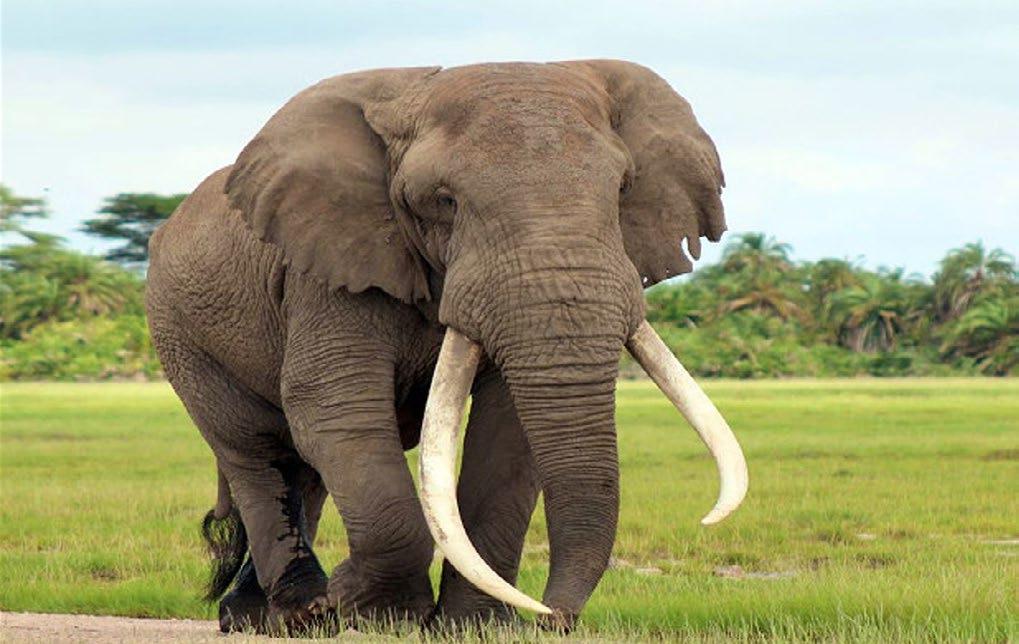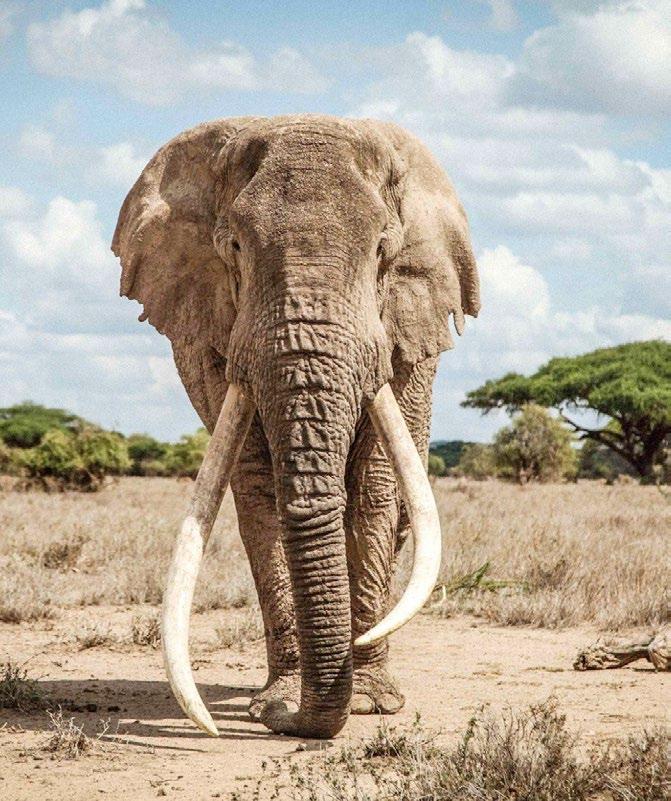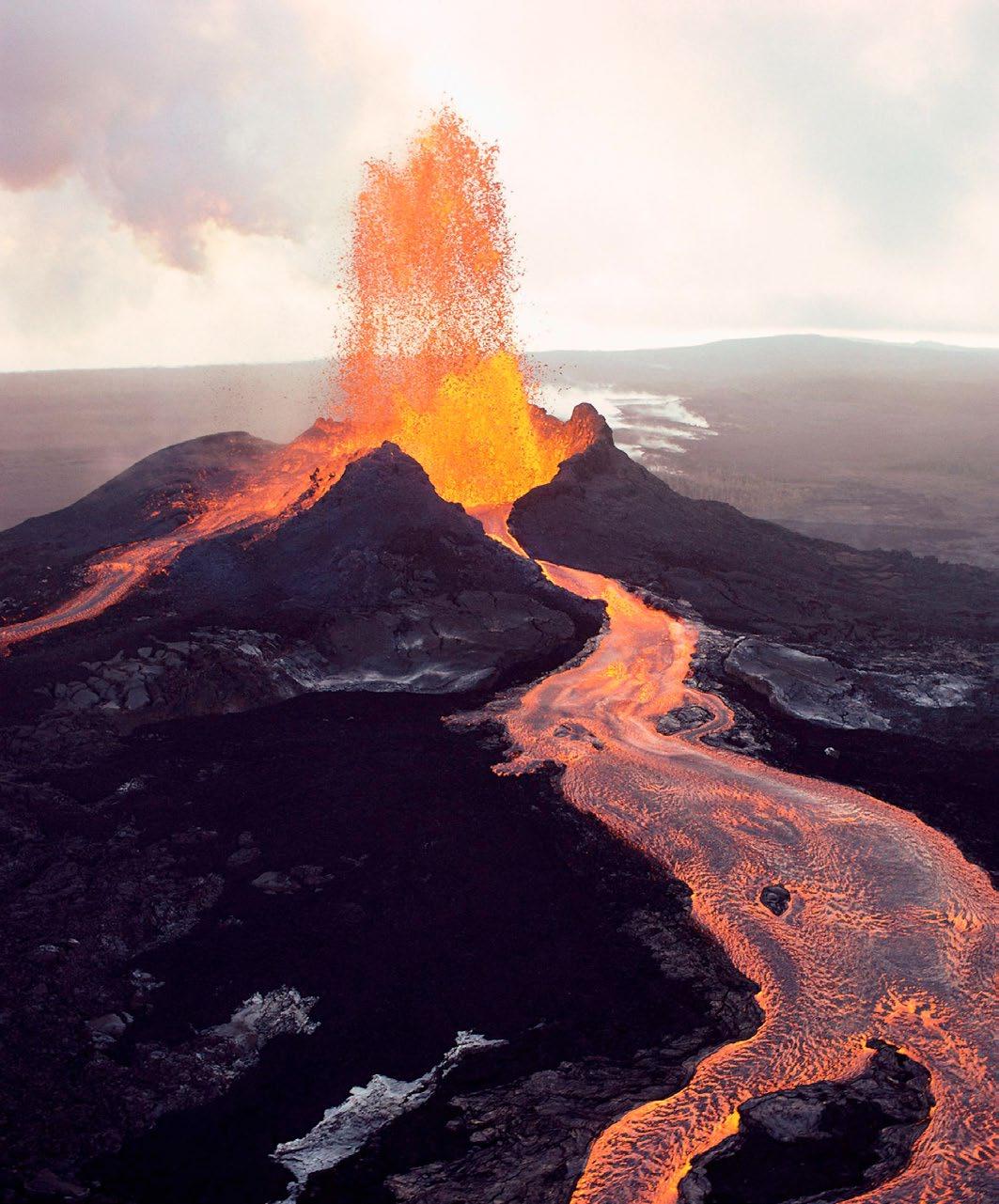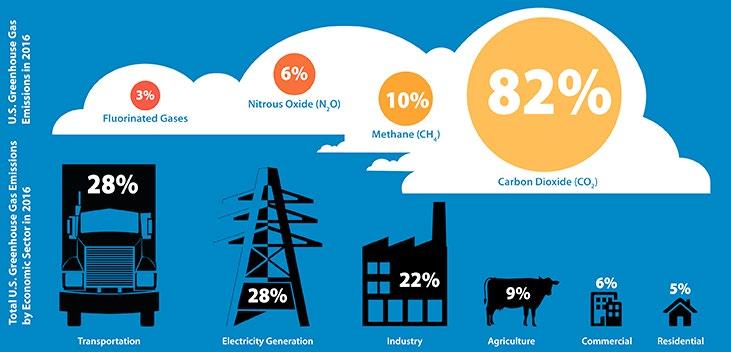
9 minute read
Climate Change
by Airkenya
Tributes to Great Tusker Tim who died this year
“Tim was born in January 1969 to Trista of the TD family. We first met him when he was only 4 years old, we watched him grow and become independent, then grow further into a magnificent mature male. Later in his life Tim became one of Africa's most famous elephant icons and people flocked to Amboseli in the hope of seeing him.
Advertisement
To us, it wasn't his spectacular tusks that made Tim so special, it was his calm and gentle nature. To us, and the other members of the ecosystem, he was a polite elephant, and very popular with other elephants of all ages, both male and female. Male elephants often befriend and follow older experienced males in order to learn important survival and social skills, especially when they first become independent. Tim welcomed these friendships; he was playful and tolerant with younger males, even
February 5th, 2020
when he was mating or guarding oestrus females. Unsurprisingly females thought him to be a good choice for mating and we know he passed on his genes many times over the years.
Wild male elephant lifespans are almost always shorter than those of females; in 47 years studying the Amboseli population we have only recorded 14 males who were older than 50 when they died. Tim was 51 and in musth, so he was in good physical shape and there is every chance we will get more babies born to him in the coming 22 months if he had been mating recently.
The post-mortem results from Kenya Wildlife Service revealed he died of a twisted gut, which is a natural cause of death for elephants, although we don't know why this happened at this time.
Of course we are incredibly sad that Tim is dead; he has been part of our lives for so long. It's hard to believe we will never see his unmistakable tall form striding the Amboseli plains, and all of us will miss the thrill of his company.
Our trust with the elephants is always precious, but with Tim it was extra special - having a male of that size and stature come up to greet us, then rest by the car always gave us goosebumps. But we take comfort in the fact that Tim's life had significant impact for both elephants and humans: protecting him catalysed positive collaborations, his fame sparked huge public awareness and his legacy lives on in the lives of the male friends who he taught, and the calves he fathered.”
Dr. Cynthia Moss Director of the Amboseli Trust for Elephants
And here’s another story about him,
“In 2014 during a board meeting in Amboseli, we found out that Tim was injured. Someone had speared him and he was limping. My board was very upset that such a giant had no protection. They immediately committed to saving Tim. It wasn’t until late 2016 that we could put a collar on him. The project involved many players; Save the Elephants, Big Life Foundation, Amboseli Trust for Elephants, Kenya Wildlife Service, and the community. Tim was fitted with a collar and that meant he could be followed, protected and kept out of farms.
It worked exceptionally well. Too well. Tim lost weight because he couldn’t raid farms. But within two years he somehow got rid of his collar. Without it, he and his gang could return to his nocturnal terrorizing raids on nearby farms.
During the filming of Wildlife Warriors last year we went to look for Tim. He was standing with his askaris, a group of big males who stood in a defensive array of outward-pointing tusks. There was Tolstoy who is easy to spot as the tips of his tusks have been sawn off and Townsend, who is Tim’s little nephew. They wafted their ears lazily even though they looked awake and terrifying, we could see that they were asleep. Tim slept last – mostly because his body kept swaying slowly from side to side with the incredible appearance as if he was about to fall down.
The next day a National Geographic crew came to shoot with us and after seeing our footage of Tim and his gang, were determined to get the same image. We returned and found Tim with about fifty other elephants. It was a family gathering. After about an hour, the bulls pulled away. We followed them from a distance. They stopped and stood out in the open. We got to within ten meters. They didn’t seem to care, and one by one they lay down, then snored for two hours. Tim surprised everyone. He was a crop raider but he was a gentle, calm, intelligent being. His size was breathtaking, and he seemed to know it.
As a huge male, Tim secured many matings with the females and so we are certain that he’s a baby daddy to many little ones in Amboseli. The gene for ‘super tusker’ has been passed on many times.
I would be lying if I said I wasn’t heartbroken that Tim is no more. But I’m also proud. Proud that he died of natural causes. That our work did create awareness of this giant in Kenya and around the world. I’m sad we never got to host the Elephant Naming ceremony with President Uhuru Kenyatta – an event that we hoped would really create much more awareness about our pride and heritage. I’m sad that we were unable to persuade others that we should be celebrating and naming our elephants as a nation.
RIP Tim, fly with all the other Elephant Angels.”

Dr. Paula Kahumbu, CEO Wildlife Direct
The Extinctions according to Richard Leakey
Richard Leakey began his talk with “this is going to depress you” and he didn’t disappoint.
Leakey described his house on Lamu island, where the water’s edge remained several feet away from the gate, even at the highest spring tide for years. Nowadays, it comes up one feet up the gate. The polar ice sheets are melting due to warmer temperatures, raising sea levels.
All habitats have changed, perhaps only in the very deep sea, will creatures not be affected. Most of the world’s sea ports will go.
So effective has the manipulation of information been that even when Al Gore lost the US presidency and made the film “An Inconvenient Truth”, governments and corporations were unable to halt the cogs that they had put into place.


The horticulturists in Kenya were already telling us to plant succulents as an adaption to long droughts that were eminent. Even today, some important people are still denying climate change. Which Leakey said was just “stupid”.
Leakey went on to say that in his book “The Sixth Extinction”, he got the blame wrong, missing out climate change caused by humans as the major cause. An extinction being when a massive amount of biodiversity is lost in a very short time.
In the Earth’s 4.6 billion year history, there have been five major extinctions.
The first was the Ordovician mass extinction, about 440 million years ago, of the Paleozic Era when 85% of species were eliminated due to continental drift and subsequent climate change.
The second - Devonian Mass Extinction came next in the Devonian period of the Paleozoic era, some 375 million years ago. 80% of all living creatures were eliminated by a lack of oxygen in the oceans, fast cooling of air, volcanic eruptions and maybe meteor strikes.
The Permian mass extinction of the Paleozoic era was third and happened 250 million years ago, killing off 96% of earth’s species. The cause is thought to have been asteroid strikes, volcanic activity, climate change and microbes.
The fourth was the Triassic-Jurassic mass extinction of the Mesozoic era, which took place about 200 million years ago. 50% of species were lost. Major volcanic activity, basalt floods, climate change, changing levels and pH of sea water is thought to be the cause.
Finally, the fifth K-T mass extinction, which is known best of all, for wiping out the dinosaurs. Some 65 million years ago, at the end of the Cretaceous period of the Mezoic era, about 75% of all species were eliminated due to extreme asteroid or meteor impact.
We are in the midst of the Sixth mass extinction, the Halocene or Anthropocene extinction right now known to be caused primarily by human population growth and increasing per capita consumption. All our modern needs, emit carbon and other and green house gas
emissions into the atmosphere and into the seas, which are suffering due to over fishing and from massive plastic pollution as well.
Food on land, Leakey claims has been affected by excess atmospheric carbon the most, with tubers storing and becoming the most toxic. Yams, cassava, sweet potatoes, taro, carrots are all affected. And, the toxins cannot be got removed even by boiling.
In a moment of dark humour, he looked around the room and said “I see prominent conservationists in the room, Cynthia Moss and Paula Kahumba …“are they just pissing in the wind?”
He did offer a glimmer of hope when he said education was the key to arresting further disasters even though it will not get us out of trouble in the near term. Educate you staff, use electrical cars, solar and wind power, he urged. Then he brought up a controversial idea that most environmentalists believe will change the social behaviour of animals. He said to conserve wild species, parks should be intensely managed. That would mean fencing, watering plants and perhaps even feeding living things to ensure their survival.
Richard Leakey was instrumental in ensuring that the new train tracks that run through Nairobi National Park were elevated to provide corridors for animals to continue grazing, hunting, breeding and avoiding collisions.
The other problem Leakey highlighted was corruption. The locust infestation is being treated with pesticides that are making the food crops that are being sprayed inedible. There is an organisation, known as the Desert Locust Control Organisation of East Africa, which was unable to do its work due to lack of funding.
If the correct pesticide had been sourced in time, the second stage, when the nymphs hatch, would have been controlled and the effects of the swarms, would be much less devastating.
This last information I get from Cynthis Moss with whom I’m sharing a morning coffee.
I also pick the brains of Delta Willis, conservationist and travel writer, who has attended both Leakey’s Nairobi lectures. And she tells me that it is possible for people to change their attitudes towards consumption and invest in renewable energies. The government of Kenya has floated a green bond.
Richard Leakey started out as a safari guide then became director of Kenya Wildlife Services where he is known for his reforms. He was also Cabinet Secretary, having founded the Safina party in 2007.
The Leakey’s including Richard’s parents Louis and Mary, and Richard’s wife Meave, worked as archaeologists and fossil hunters in Olduvai gorge and the Lake Turkana basin in the 1960s and 1970s, their work cemente d Africa as the cradle of mankind.









